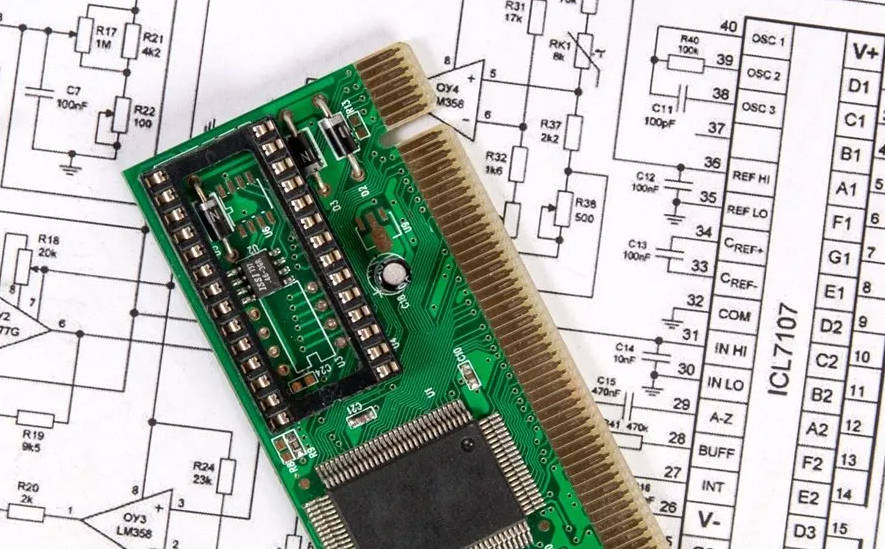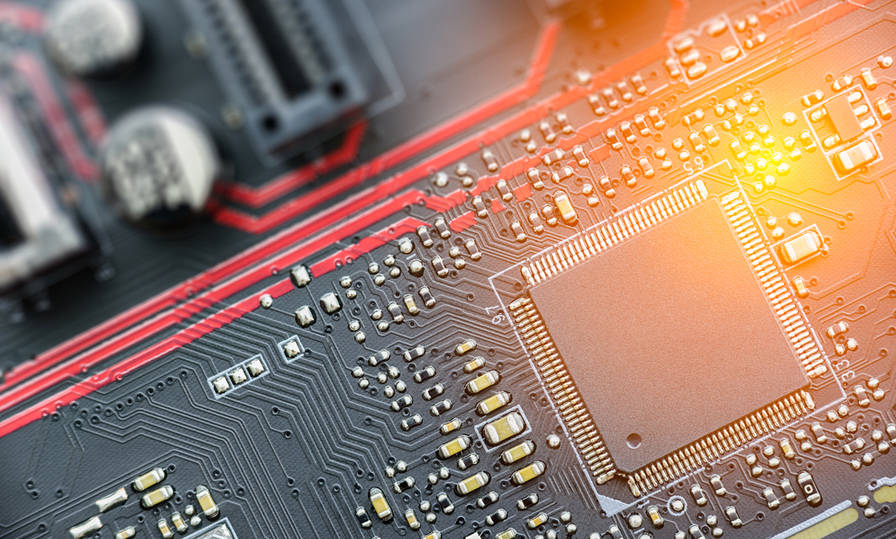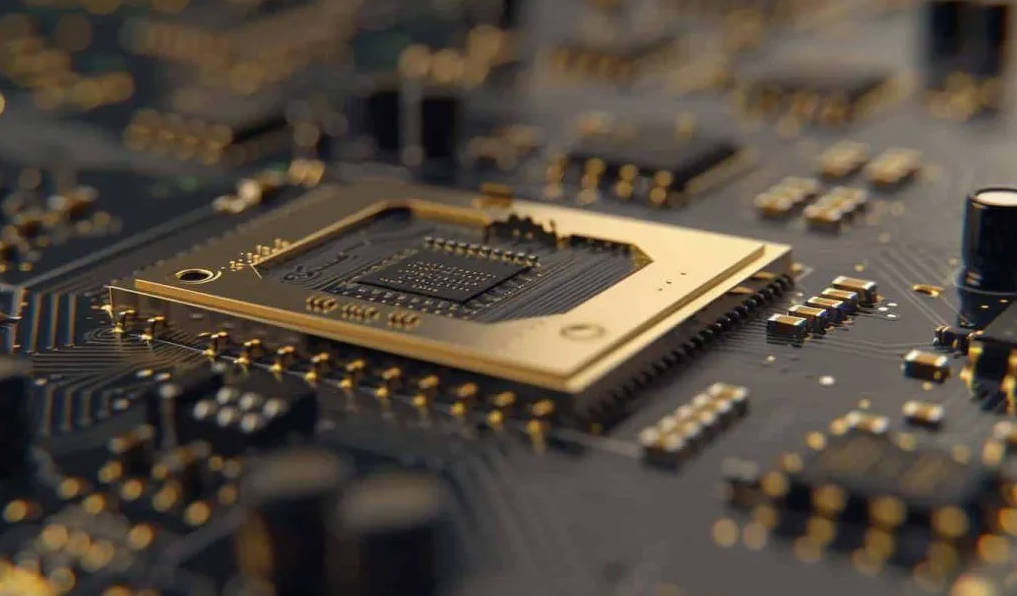Article Contents
- Introduction
- The Critical Need for PCB Inspection
- In-Depth Look: X-Ray Inspection (AXI)
- The Heat is On: Thermal Imaging Inspection
- Sounding Out Flaws: Acoustic Scanning (SAM)
- Comparative Analysis
- Addressing Common User Concerns
- Recommendations for PCB Manufacturing Service Users
- Conclusion
- References
1. Introduction
In an era dominated by electronics, the Printed Circuit Board (PCB) stands as the unsung hero, the foundational platform upon which all modern devices are built. From the smartphone in your pocket to the complex avionics systems in an aircraft, the reliability of a device is directly tied to the quality of its PCBs. Consequently, rigorous quality inspection is not just a best practice in PCB manufacturing; it is an absolute necessity. A single, microscopic flaw can lead to intermittent failures, costly product recalls, or catastrophic system malfunctions.
The purpose of this article is to provide a comprehensive comparison of three leading non-destructive inspection methods: X-Ray Inspection, Thermal Imaging, and Acoustic Scans. This guide is tailored for engineers, project managers, and businesses seeking PCB manufacturing services who need to make informed decisions about quality control. We will delve into how each technology works, its unique advantages and limitations, and its ideal applications.
Throughout this guide, we will address key questions: Which method is best for detecting specific types of PCB defects? How do they compare in terms of cost-effectiveness and impact on production speed? And ultimately, how can you choose the right inspection strategy to ensure the highest quality for your specific product?

2. The Critical Need for PCB Inspection
The complexity of modern PCBs—with their multiple layers, fine-pitch components, and advanced packages like Ball Grid Arrays (BGAs)—makes visual inspection alone insufficient. Defects can be hidden deep within the board’s structure or be too subtle for the human eye to detect. Effective inspection is the frontline defense against costly failures down the line.
The primary goal of PCB inspection is to identify and rectify manufacturing defects as early as possible. The cost to fix a defect increases exponentially as the product moves from the bare board stage to final assembly and deployment in the field. A fault found on the production line is an inconvenience; a fault found by a customer is a disaster for both budget and brand reputation.
Common PCB Defects
Choosing the right inspection method requires understanding the types of flaws that can occur. Key defects include:
- Solder Joint Issues: These are the most common defects. They include solder bridges (shorts between pins), open circuits (insufficient solder), cold solder joints (poor wetting), and voids (gas pockets trapped within the solder). Voids are particularly problematic in BGA packages, where they can compromise both electrical and thermal conductivity.
- Component Misalignment: Shifted or incorrectly rotated components can lead to poor connections or shorts.
- Delamination: The separation of layers within the PCB substrate. This internal structural failure can be caused by thermal or mechanical stress and can lead to broken internal traces and complete board failure.
- Cracks: Micro-cracks in the substrate, vias (plated through-holes), or component packages can propagate over time, leading to eventual failure.
- Internal Shorts/Opens: Flaws in the inner copper layers of a multi-layer PCB that are impossible to see from the outside.
The choice of inspection method is therefore a strategic decision that directly impacts product quality, manufacturing yield, and overall cost. A method that excels at finding solder voids may be completely blind to delamination, and vice versa.
3. In-Depth Look: X-Ray Inspection (AXI)
Automated X-ray Inspection (AXI) is one of the most powerful and widely used methods for non-destructive testing in PCB assembly. It leverages the ability of X-rays to penetrate solid materials, creating an image based on the density and thickness of the materials they pass through.
How It Works
An X-ray tube generates a beam of X-rays that is directed at the PCB. A detector on the other side captures the attenuated rays, forming a grayscale image. Denser materials, like solder and component leads, absorb more X-rays and appear darker in the image, while less dense materials like the FR-4 substrate appear lighter. This contrast allows inspectors (or automated software) to see through the board and analyze internal structures. Systems range from 2D, which provides a top-down view, to 3D (Computed Tomography or CT), which reconstructs a full three-dimensional model of the solder joint or component.
Advantages
- High Precision for Hidden Defects: X-ray inspection is the industry standard for verifying the quality of solder joints hidden from view, particularly for components like BGAs, Land Grid Arrays (LGAs), and Quad-Flat No-leads (QFNs). It can accurately measure voiding percentage, analyze solder ball shape and alignment, and detect shorts between balls.
- Non-Destructive: The process does not physically harm the board or its components, allowing 100% of production to be inspected if required.
- Suitable for Complex PCBs: For multi-layer, high-density interconnect (HDI) boards, X-ray is often the only way to verify the integrity of internal layers, vias, and buried components.
Limitations
- Higher Cost and Complexity: X-ray inspection systems represent a significant capital investment. They also require skilled operators to interpret the results and shielded enclosures to ensure radiation safety, adding to the operational overhead.
- Limited Defect Scope: While unparalleled for solder analysis, X-ray is less effective for detecting issues that do not involve a density change. It cannot reliably detect delamination or purely functional, heat-related issues.
- Interpretation Challenges: In extremely dense, double-sided boards, 2D X-ray images can be cluttered and difficult to interpret due to overlapping features from both sides. This is where more time-consuming 3D CT scanning becomes necessary.
Best Use Cases
AXI is indispensable for high-density PCBs, assemblies with BGA packages, and quality-critical applications in the medical, aerospace, military, and automotive industries where failure is not an option.
Common User Questions
Is X-Ray inspection safe for components?
Yes, X-ray inspection is generally safe for the vast majority of electronic components. The radiation dose and exposure time used in modern AXI systems are carefully controlled to be well below the levels that would cause damage to silicon wafers or other sensitive materials. However, for extremely radiation-sensitive devices, manufacturers’ guidelines should always be consulted.
How does it impact production timelines?
Modern inline 2D AXI systems are designed for high-speed operation and can be seamlessly integrated into a surface-mount technology (SMT) production line with minimal impact on overall cycle time. Offline inspection or more detailed 3D CT scanning will take longer and are typically used for process auditing, failure analysis, or small-batch production.
4. The Heat is On: Thermal Imaging Inspection
Thermal imaging, or infrared (IR) thermography, is a non-contact inspection method that detects heat. It works by capturing the infrared radiation emitted by an object, which is invisible to the human eye, and translating it into a visual image called a thermogram. Every point on the thermogram corresponds to a temperature.
How It Works
During PCB inspection, the board is powered on and put into a functional test state. An infrared camera captures the thermal profile of the board as it operates. The principle is simple: proper electrical function generates a predictable thermal signature. Deviations from this signature—hot spots or cold spots—indicate potential problems. A short circuit, for example, will create a localized hot spot due to excessive current flow, while an open circuit might show up as a component that remains unexpectedly cool.
Advantages
- Fast and Non-Invasive: Thermal scans can be performed in seconds without any physical contact with the board. This makes it ideal for rapid screening of large volumes of PCBs.
- Effective for Functional Defects: Thermal imaging excels at detecting power-related and functional defects that other methods miss, such as short circuits, overloaded components, and poor connections causing high resistance. It provides a real-time view of how the PCB is behaving under load.
- Relatively Lower Cost: The initial investment for a high-quality thermal imaging setup is typically lower than for an X-ray or acoustic scanning system.
Limitations
- Surface-Level or Heat-Related Defects Only: The primary drawback of thermal imaging is its inability to see internal, non-thermal structural defects. It cannot detect delamination, internal cracks, or solder voids unless they happen to create a significant thermal anomaly on the surface.
- Lower Spatial Resolution: Compared to X-ray, the resolution of thermal imaging is generally lower, making it difficult to pinpoint faults on a microscopic scale within dense component packages.
- Requires a “Golden Board”: To be effective, thermal inspection often relies on comparing the board under test to a known-good reference board (a “golden board”). Creating and maintaining this baseline standard is a necessary part of the process.
Best Use Cases
Thermal imaging is best used for quick screening during functional testing, identifying thermal management issues, and diagnosing power distribution problems. It is particularly valuable for power electronics and as a complementary method to structural inspection techniques.
Common User Questions
Can thermal imaging detect all PCB defects?
No, thermal imaging cannot detect all PCB defects. Its capability is strictly limited to faults that produce an abnormal thermal signature. It is blind to many latent structural defects, such as internal voids or minor component misalignment, that do not immediately affect the board’s temperature profile.
How cost-effective is it compared to other methods?
For its specific purpose—functional and thermal validation—thermal imaging is highly cost-effective due to its high speed and lower equipment cost. However, it cannot replace the need for structural inspection methods like X-ray for ensuring assembly quality.
5. Sounding Out Flaws: Acoustic Scanning (SAM)
Scanning Acoustic Microscopy (SAM) is a highly specialized non-destructive technique that uses high-frequency sound waves (ultrasound) to create images of a material’s internal structure. It is exceptionally sensitive to changes in acoustic impedance, which occur at the boundaries between different materials or at locations with air gaps.
How It Works
A SAM system uses a transducer that emits a focused pulse of ultrasound into the PCB. A coupling medium, typically deionized water, is required to efficiently transmit the sound waves from the transducer into the sample. These sound waves travel through the board’s materials and are reflected, scattered, or transmitted at interfaces. The same transducer detects the returning echoes. By scanning the transducer across the PCB and analyzing the timing and amplitude of these echoes, a detailed, layer-by-layer image of the internal structure can be constructed.
Advantages
- Unmatched for Interfacial Defect Detection: Acoustic microscopy is the most reliable method for detecting internal structural defects like delamination, voids, and cracks, especially at the interfaces between different materials (e.g., between an IC die and its package, or between layers of a PCB substrate). Air is a near-perfect reflector of ultrasound, so even microscopic air gaps show up with extremely high contrast.
- Non-Destructive: Like the other methods, SAM does not damage the component, making it suitable for high-reliability screening.
- Material Characterization: Beyond just finding flaws, SAM can also be used to measure material properties and analyze bond integrity.
Limitations
- Specialized and Slower: SAM is a relatively slow, point-by-point scanning process. It requires the sample to be immersed in a coupling fluid and necessitates highly trained technicians to operate the equipment and interpret the complex results.
- Limited Electrical Insight: Acoustic scanning provides no information about the electrical functionality of the board. It cannot detect a short circuit or an open circuit unless that defect has also created a physical crack or void.
- High Equipment Cost: SAM systems are sophisticated and expensive, typically reserved for failure analysis labs or manufacturing lines for mission-critical components.
Best Use Cases
SAM is the go-to method for high-reliability applications where structural integrity is paramount, such as in the aerospace, defense, and medical implantable device industries. It is used to inspect IC packages for die attach voids, screen for delamination in multi-layer ceramic capacitors, and ensure the structural quality of flip-chip bumps.
Common User Questions
Is acoustic scanning practical for small-scale production?
Due to its slow speed, high cost, and operational complexity, acoustic scanning is generally not considered practical for standard small-scale or consumer electronics production. Its use is typically justified only when the cost of failure is extremely high and the primary risk is structural integrity.
How does it compare to X-Ray for internal defect detection?
X-ray and SAM are complementary. X-ray detects variations in material density, making it ideal for solder joint analysis. SAM detects variations in acoustic impedance, making it superior for finding air gaps like delamination and cracks, which are often invisible to X-ray.

6. Comparative Analysis
Choosing the right inspection method depends on balancing accuracy, cost, speed, and the specific defects you need to find. The following table provides a side-by-side comparison.
| Feature | X-Ray Inspection (AXI) | Thermal Imaging | Acoustic Scanning (SAM) |
|---|---|---|---|
| Primary Principle | Material Density Variation | Infrared (Heat) Radiation | Acoustic Impedance Mismatch |
| Best For Detecting | Solder joint defects (voids, shorts, opens), BGA quality | Short circuits, overloaded components, functional faults | Delamination, internal cracks, bond voids |
| Detectable Defects | Solder voids, shorts, opens, component alignment, via fills. | Hot spots, cold spots, power distribution issues. | Interfacial delamination, cracks, material disbonds. |
| Key Advantage | Excellent visibility of hidden solder joints. | Extremely fast and non-contact for functional testing. | Unparalleled sensitivity to air gaps and cracks. |
| Key Limitation | Poor at detecting delamination; high equipment cost. | Cannot see internal structural flaws; requires power-on. | Slow process; requires coupling fluid; no electrical data. |
| Inspection Speed | Fast (Inline 2D) to Slow (3D CT) | Very Fast | Slow |
| Relative Cost | High | Low to Medium | Very High |
| Scalability | Excellent for high-volume inline manufacturing. | Excellent for rapid screening of large volumes. | Best suited for lab analysis or low-volume, high-rel. |
7. Addressing Common User Concerns
When selecting an inspection strategy, several practical concerns often arise for users of PCB manufacturing services.
Reliability: Which Method Ensures the Highest Quality?
The highest quality is not achieved by a single method, but by the appropriate method. For a complex server motherboard with numerous BGAs, reliability is ensured by comprehensive X-ray inspection. For a high-power LED lighting board, reliability hinges on thermal management, making thermal imaging critical. For a pacemaker’s electronics, structural integrity is paramount, demanding acoustic scanning. The most reliable inspection strategy aligns the method’s strengths directly with the product’s most likely failure modes.
Cost vs. Benefit: Balancing Inspection Costs with Defect Prevention
While advanced inspection adds to the upfront cost, it should be viewed as an investment in risk mitigation. The cost of an X-ray inspection is trivial compared to the cost of a multi-thousand-unit product recall. The key is to implement a tiered strategy. Use cost-effective methods like Automated Optical Inspection (AOI) and thermal imaging for 100% of boards, and reserve more expensive methods like 3D X-ray or SAM for critical components or as a statistical process control tool.
Ease of Integration
Inline AXI and thermal imaging systems are designed to fit directly into automated manufacturing workflows. Acoustic scanning, being a slower and often manual process, is more typically used offline for process development, failure analysis, or batch auditing. When discussing options with a manufacturing partner, ask how their inspection capabilities are integrated into their production line to understand the impact on throughput.
Regulatory Compliance
For many industries (medical, automotive, aerospace), inspection is not optional—it’s mandated by standards like IPC-A-610 (Acceptability of Electronic Assemblies) and ISO regulations. These standards often specify the acceptance criteria for defects like solder voiding or delamination. Your chosen inspection method must be capable of measuring against these industry benchmarks.
8. Recommendations for PCB Manufacturing Service Users
Navigating inspection options with your Contract Manufacturer (CM) or PCB service provider can be daunting. Here are some actionable recommendations:
- Define Your Needs Based on Your Product: Before you talk to a provider, know your product’s specific risks. Is it a high-density board with 0.4mm pitch BGAs? X-ray is non-negotiable. Is it a power supply? Thermal validation is key. Is it a life-sustaining medical device? A combination including acoustic scanning may be required.
- Embrace a Hybrid Approach: The most robust quality assurance plans often combine methods. A powerful strategy is to use X-ray to validate the structural quality of the assembly process and then use thermal imaging during functional testing to verify real-world performance. This covers both “was it built right?” and “does it work right?”.
- Ask the Right Questions: When discussing inspection with a potential partner, go beyond “Do you have X-ray?”. Ask specific questions:
- “What is your capability for 3D X-ray inspection for PoP (Package-on-Package) components?”
- “How do you use thermal imaging in your functional testing process?”
- “For our high-reliability board, can you provide acoustic microscopy data to certify against delamination?”
- “What IPC class do you inspect to (Class 2, Class 3)?”
9. Conclusion
The selection of a PCB inspection method is a critical decision that directly influences product reliability, cost, and time-to-market. There is no single “best” solution; instead, there is a “right” solution for a specific application.
- X-Ray Inspection remains the cornerstone for verifying the structural integrity of complex, high-density assemblies, offering unparalleled insight into hidden solder joints.
- Thermal Imaging provides a fast, cost-effective method for validating the functional and thermal performance of a board, catching defects that structural tests would miss.
- Acoustic Scanning is the ultimate tool for ensuring the internal structural integrity of components and substrates, making it indispensable for applications where failure could have catastrophic consequences.
Ultimately, the most effective approach is to align your inspection strategy with your manufacturing goals and product requirements. By understanding the distinct strengths and limitations of each method, you can have more informed discussions with your PCB manufacturing service providers. We encourage you to consult with manufacturing experts, share the specifics of your design, and work collaboratively to select the inspection approach that will deliver the quality and reliability your customers demand.
10. References
For further reading and official standards on PCB quality and inspection, stakeholders are encouraged to consult resources from IPC, the global trade association for the electronics manufacturing industry:
- IPC-A-610, Acceptability of Electronic Assemblies: This is the most widely used standard in the industry, providing visual acceptance criteria for PCBs.
- IPC-7095, Design and Assembly Process Implementation for BGAs: This standard provides detailed information on BGA quality, including criteria for voiding that are often measured with X-ray systems.



